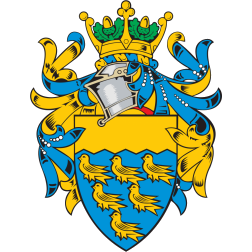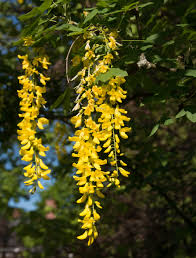
Family History Group

About
Members
Research
Links
Contact
Return to top
BIRTH, MARRIAGE AND DEATH
What extra information a certificate gives as opposed to an index entry.Index Versus Certificate
| Birth | Marriage | Death | ||||
| Attribute | Index | Certificate | Index | Certificate | Index | Certificate |
| Name | Yes | Yes | Yes | Yes | Yes | Yes |
| Event Date | Yes | Yes | Yes | Yes | Yes | Yes |
| District | Yes | Yes | Yes | Yes | Yes | Yes |
| Age | No *¹ | Yes | No | Yes*¹ | Yes | Yes |
| Father | No | Yes | No | Yes | No | No |
| Mother | Yes*² | Yes | No | No | No | No |
| Spouse | n/a | n/a | Yes*³ | Yes | No | No* |
| Father's Occupation | No | Yes | No | Yes | No | No |
Notes
*¹ - All index lists are displayed in yearly quarters, Q1,Q2,Q3 and Q4. As parents had 42 days to register a birth it was not uncommon for a child born in December to be entered in the register for the following year.
On marriage certificates the couples age was not always stated, more often 'Of Full Age' was entered.
*² - The mother's maiden name only started to be recorded in the birth indexes from Q3 in 1911.
*³ - The spouses surname was recorded in marriage indexes fom Q1 in 1912. However, for marriages prior to that date the spouse could be identified by clicking on the record and select the list of four people on that page. (2 female 2 male). For early marriages 1840-1850 there were eight people per page.
* - On death certificates the informant, depending on the circumstances and age of the deceased could be anybody. Most likely a family member but quite often a medical practitioner would be recorded.
General
As you can see there is generally enough information to be found on the index entries to confirm and proceed with your research. It is generally when the search engine offers too many similar choices that it might become necessary to purchase the certificate.
A marriage certificate also records witnesses who often turn out to be close relatives.
For dates the indexes refer to QUARTERS whereas the certificates display the actual day.
* The 1841 census only gave the precise age for people of 15 years and under, everyone else was rounded down to the nearest 5. Therefore, a 64 year old person would be recorded as 60 and 59 as 55 etc.
# In the 1841 census the nearest you get to a birthplace is whether the person was born in the census county or not.
Because families had to pay for their children to be baptised they sometimes waited a few years and had all their children baptised at the same time. This, of course, meant that the baptismal date of the eldest might be some 11 years after the birth date.
2. The early parish registers (1538) could be written up in simple latin but not often.
Baptisms, marriages and burials were entered in the same parish register until 1754 when marriages were separated out and in 1813 baptisms and burials were also separated.
3. About 95% of the English and Welsh population were anglican so their entries would be in the parish register. Quakers and Jews were allowed to have their own recording arrangements
*¹ - All index lists are displayed in yearly quarters, Q1,Q2,Q3 and Q4. As parents had 42 days to register a birth it was not uncommon for a child born in December to be entered in the register for the following year.
On marriage certificates the couples age was not always stated, more often 'Of Full Age' was entered.
*² - The mother's maiden name only started to be recorded in the birth indexes from Q3 in 1911.
*³ - The spouses surname was recorded in marriage indexes fom Q1 in 1912. However, for marriages prior to that date the spouse could be identified by clicking on the record and select the list of four people on that page. (2 female 2 male). For early marriages 1840-1850 there were eight people per page.
* - On death certificates the informant, depending on the circumstances and age of the deceased could be anybody. Most likely a family member but quite often a medical practitioner would be recorded.
General
As you can see there is generally enough information to be found on the index entries to confirm and proceed with your research. It is generally when the search engine offers too many similar choices that it might become necessary to purchase the certificate.
A marriage certificate also records witnesses who often turn out to be close relatives.
For dates the indexes refer to QUARTERS whereas the certificates display the actual day.
Information Displayed on the 10 Yearly Census Returns
| Attribute |
1911 |
1901 |
1891 |
1881 |
1871 |
1861 |
1851 |
1841 |
| Street |
Yes |
Yes |
Yes |
Yes |
Yes |
Yes |
Yes |
Yes |
| Dwelling Type |
Yes |
No |
No |
No |
No |
No |
No |
No |
| Name |
Yes |
Yes |
Yes |
Yes |
Yes |
Yes |
Yes |
Yes |
| Relationship to Head |
Yes |
Yes |
Yes |
Yes |
Yes |
Yes |
Yes |
Yes |
| Age |
Yes |
Yes |
Yes |
Yes |
Yes |
Yes |
Yes |
See * |
| Sex |
Yes |
Yes |
Yes |
Yes |
Yes |
Yes |
Yes |
Yes |
| Married or Single |
Yes |
Yes |
Yes |
Yes |
Yes |
Yes |
Yes |
No |
| Years in present marriage |
Yes |
No |
No |
No |
No |
No |
No |
No |
| Children born to date |
Yes |
No |
No |
No |
No |
No |
No |
No |
| Occupation |
Yes |
Yes |
Yes |
Yes |
Yes |
Yes |
Yes |
Yes |
| Birthplace |
Yes |
Yes |
Yes |
Yes |
Yes |
Yes |
Yes |
See# |
| Nationality |
Yes |
No |
No |
No |
No |
No |
No |
No |
| Infirmity |
Yes |
Yes |
Yes |
Yes |
Yes |
Yes |
Yes |
No |
* The 1841 census only gave the precise age for people of 15 years and under, everyone else was rounded down to the nearest 5. Therefore, a 64 year old person would be recorded as 60 and 59 as 55 etc.
# In the 1841 census the nearest you get to a birthplace is whether the person was born in the census county or not.
Notes Regarding Parish Registers
1.
It is the date of baptism that is generally recorded for infants,
sometimes the birth date would be appended as well, but not always.Because families had to pay for their children to be baptised they sometimes waited a few years and had all their children baptised at the same time. This, of course, meant that the baptismal date of the eldest might be some 11 years after the birth date.
2. The early parish registers (1538) could be written up in simple latin but not often.
Baptisms, marriages and burials were entered in the same parish register until 1754 when marriages were separated out and in 1813 baptisms and burials were also separated.
3. About 95% of the English and Welsh population were anglican so their entries would be in the parish register. Quakers and Jews were allowed to have their own recording arrangements